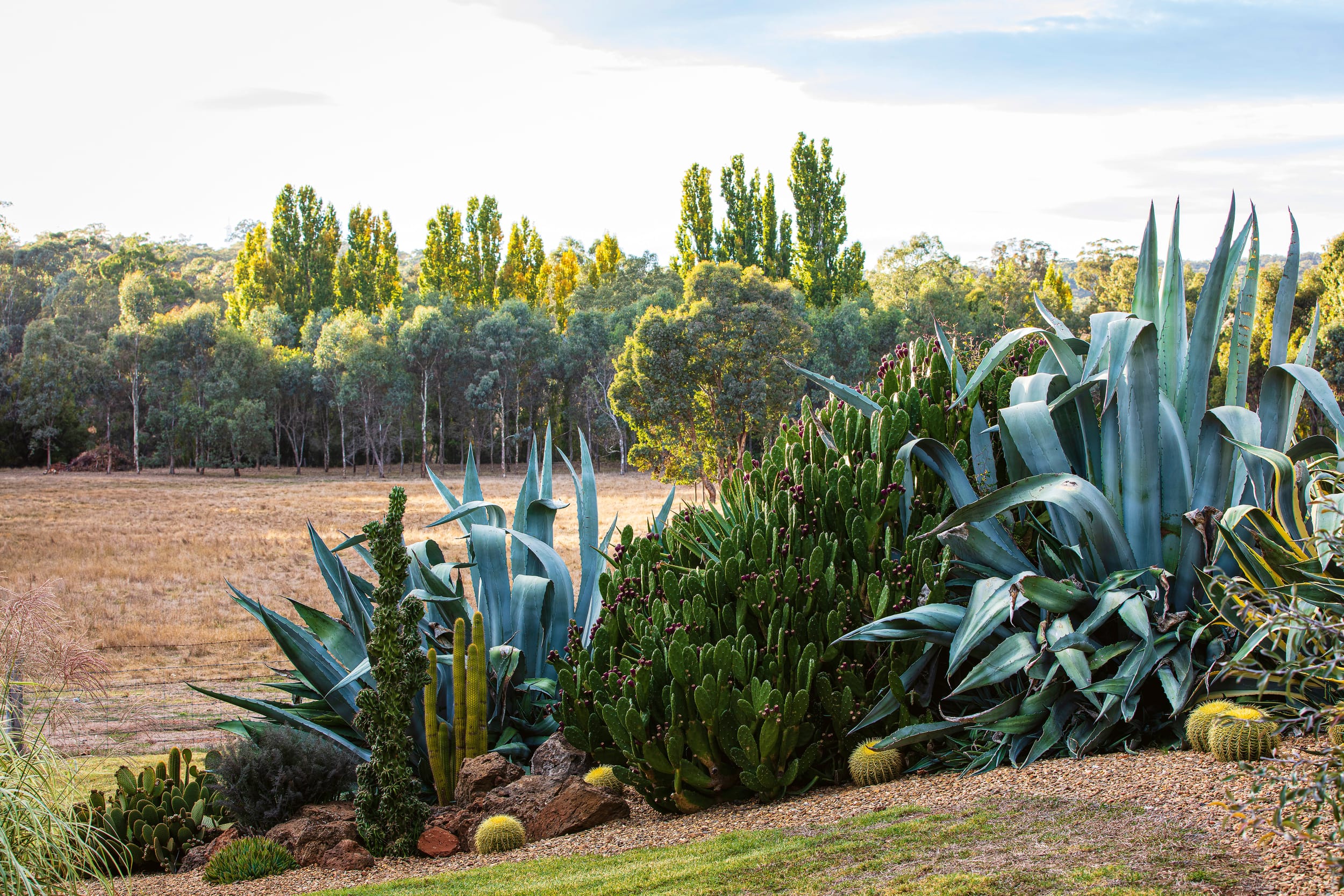
Resilience and ingenuity help this unconventional garden thrive in a tough central Victorian climate.
Words Jo Stewart
Photography Claire Takacs
JEREMY Valentine and Grant Francis aren’t afraid of a bit of hard yakka. Running a popular vintage fashion business means the couple work long hours sourcing, pricing, merchandising and marketing the unique finds they travel far and wide to procure. It’s a work ethic that’s come in handy as they’ve slowly transformed a barren, weed-infested property in the central Victorian town of Clydesdale into a triumphant, climate-resilient green space infused with a dash of magic.
The creative couple—who met at art school 30 years ago and have run Melbourne’s Shag stores since the late nineties—were drawn to the region while searching for a haven from the big smoke. And although 25 kilometres away in Castlemaine you can get a mean banh mi, seriously good coffee and a live music fix, in Clydesdale (population 58) there’s none of that. Which is just how they like it.
‘With everything that’s going on in the world, it seems safe here,’ says Jeremy.
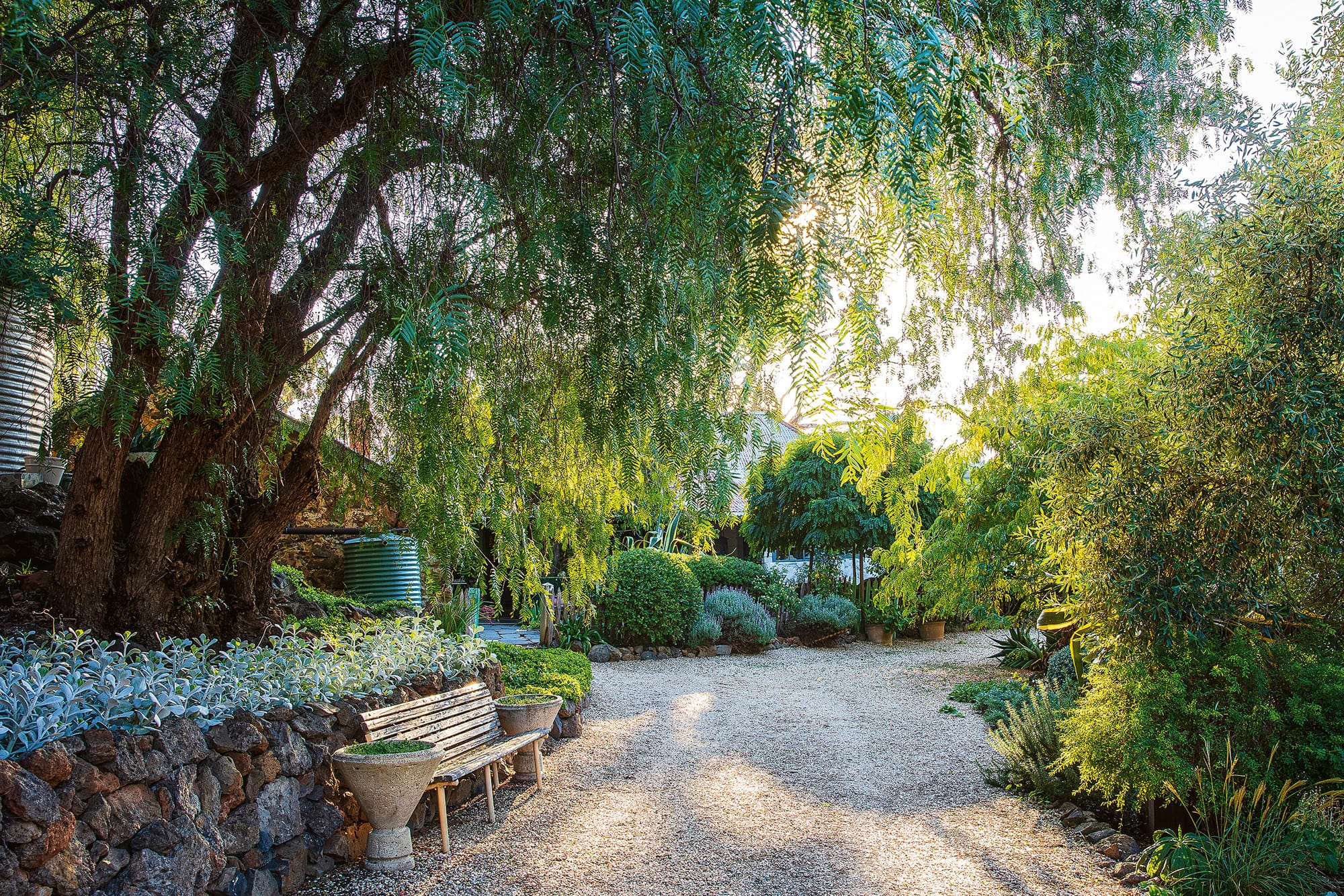
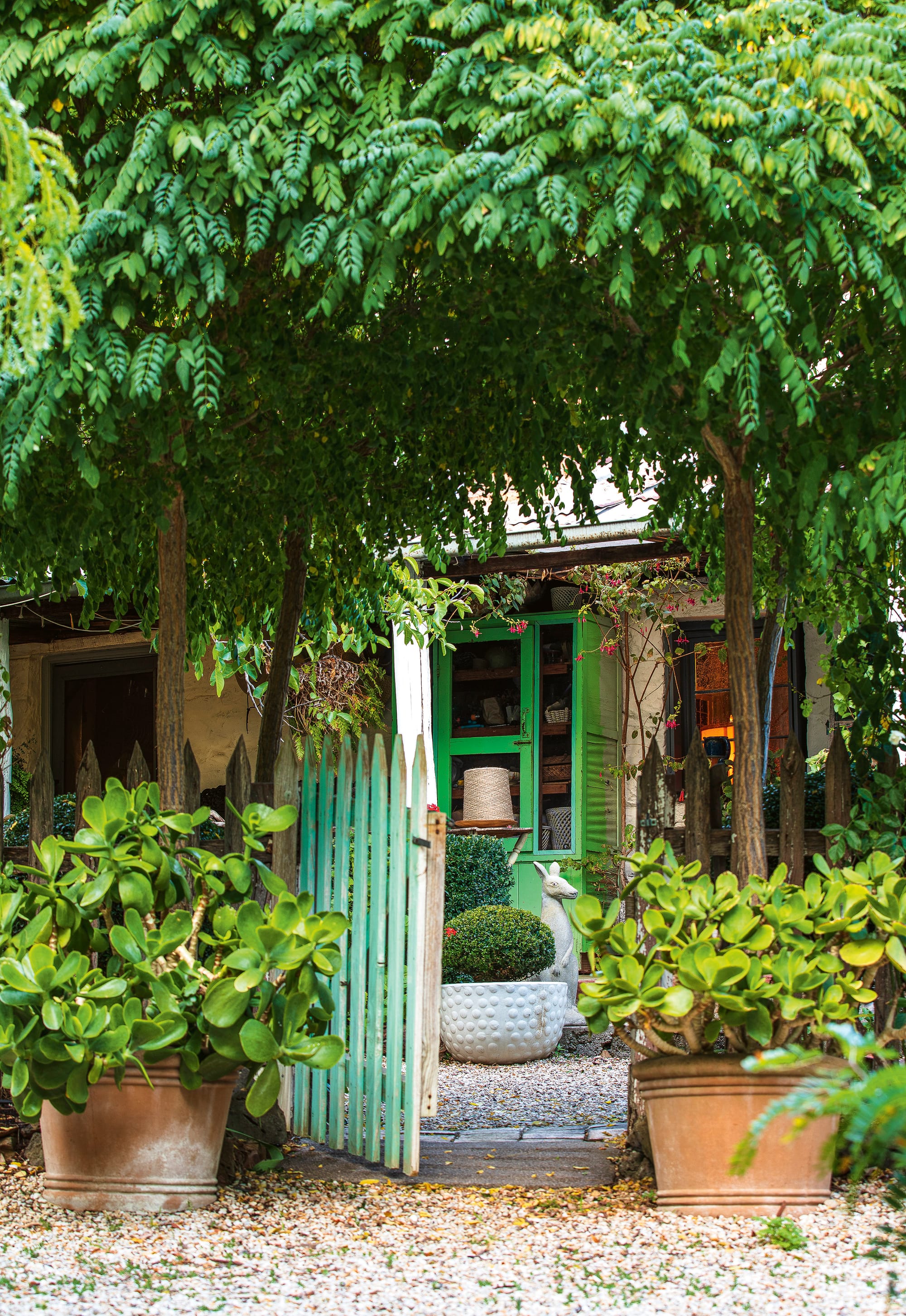
Inspiration from famed designer Edna Walling is apparent in the curves and hidden vistas of the garden. Robinias and euphorbias frame the garden gate. Photography Claire Takacs.
In this charming region, tin-roofed miners’ cottages and modest farmhouses dot the bush-fringed landscape scarred by the gold rush. And then there’s The Stones: a property that tips its hat to the past while welcoming new and global influences, it has thrown out the rulebook for what a country garden should be, experimentation and invention allowing Jeremy and Grant to conjure an avant-garde botanical world from next to nothing.
It’s far more mellow than the fever dream of bright hues and bold patterns you’ll see in their retail spaces. ‘That stems from needing a break from our work,’ says Jeremy. ‘There’s lots going on visually in our shops, and it’s too stimulating. When we come here, we want to feel relaxed.’
It’s also a far cry from the scene that greeted the couple when they first took ownership of the 16 acre property 10 years ago.
‘The grass was so tall we couldn’t even see the fences,’ says Grant. ‘We had to get the neighbours to put their cows in to eat it down.’ That was followed up by a whipper-snipper and ride-on blitzkrieg, and these days a flock of low-maintenance Dorper sheep faithfully fulfil their duties as lawnmowers.
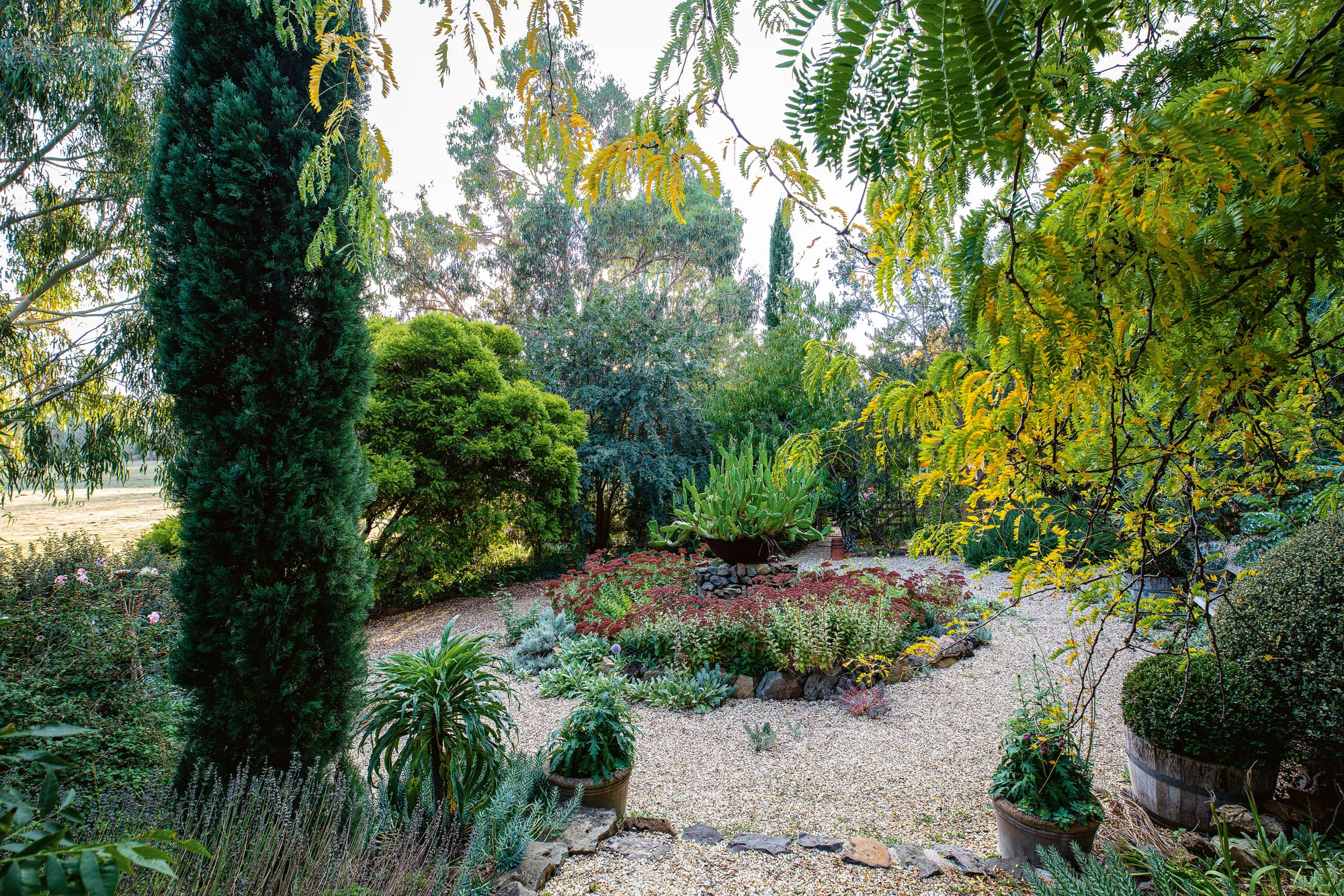
Since then, much has been accomplished, all without professional help. Jeremy’s fondness for gardens formed while growing up in Cheshire, England, where he’d show visitors around his family’s garden, dazzling them with his botanical knowledge. Grant, meanwhile, recalls his childhood in Hobart, where everyone had a vegie patch and backyard chooks.
‘In the seventies, Mum was obsessed with creating a garden, so I became her workhorse pushing wheelbarrows and moving huge rocks,’ he says.
Beyond that, they’ve been influenced by Australian landscape designer Edna Walling’s unorthodox approach. Born in 1896, the queer woman who wore men’s clothing was considered quite outrageous for the time.
‘I’m quite obsessed with her,’ says Jeremy. ‘Her garden ethos was that things should be a bit overgrown, curved and have a bit of mystery.’ She was also against throwing big money at gardens, so she’d approve of the way Jeremy and Grant rolled up their sleeves to hand-build walls and steps using stones gathered from the paddocks. Ditto the fact many of their showstopping succulents came from a cactus-loathing woman they connected with on Facebook Marketplace. They’ve returned to her Bendigo property three times since, to snap up more cactuses she can’t stand the sight of, proving that even in gardening, one person’s trash is another’s treasure.
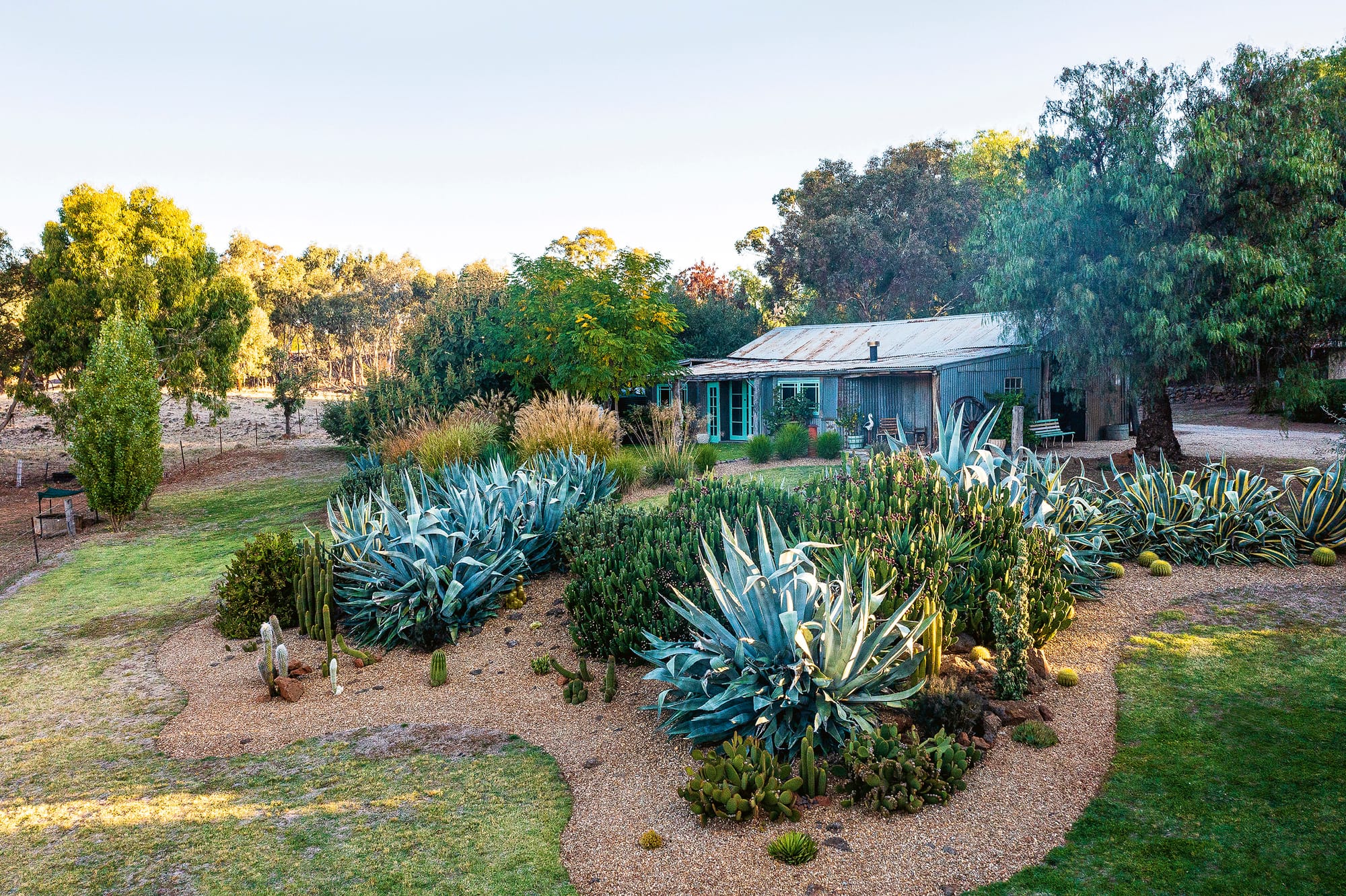
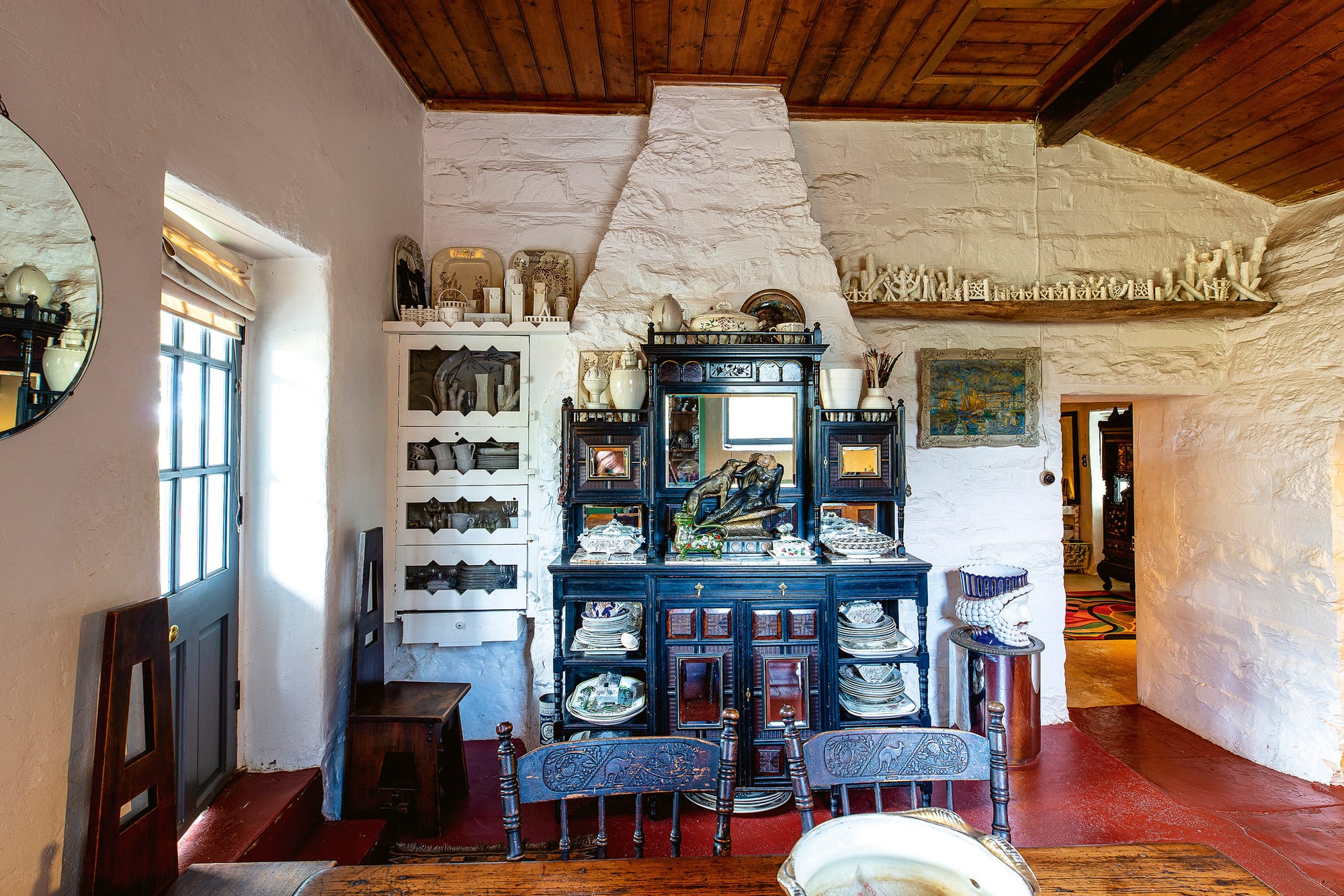

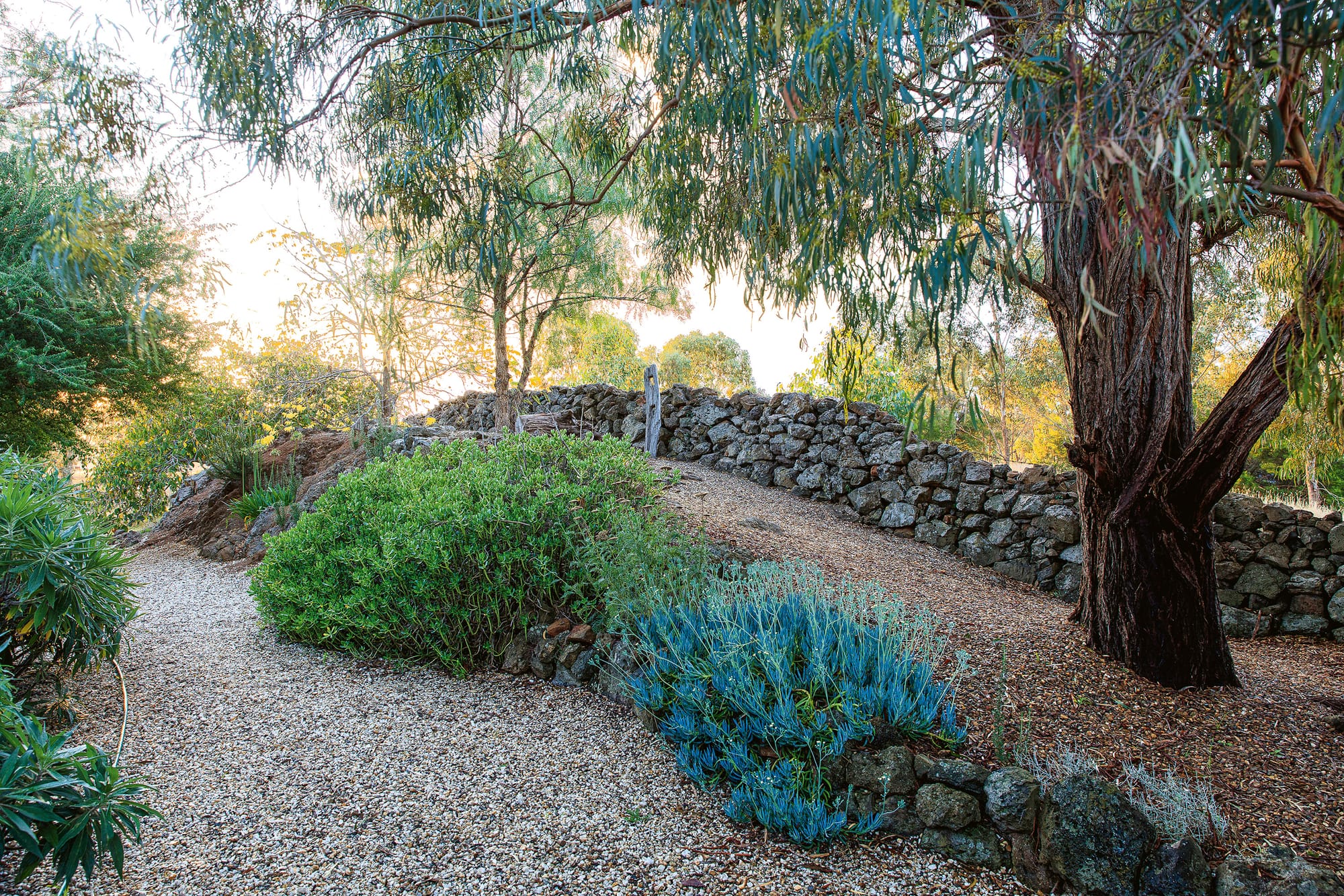
Clockwise from top left The former milking shed stands behind the cactus garden; the farmhouse was built in 1857; stone walls flank paths beside blue chalk sticks (Senecio), sedums and Echium; inside the milking shed. Photography Claire Takacs.
Of course, doing everything themselves has been a steep learning curve, and the couple are the first to admit that’s involved much trial and error. ‘We’re not horticulturists,’ says Jeremy. ‘It’s about learning the language of the climate and creating a feeling or mood with plants.’
That’s no mean feat when gardening in an unforgiving temperature range of −7 to 47°C. In the first year they enthusiastically planted drought-tolerant plants that excelled in summer, only to kiss them goodbye when the savage winter frosts hit.
Tuning into what grows in the area led them to simplify their approach and embrace a constellation of go-to species. A lawn-like, succulent creeper called baby sun rose (Mesembryanthemum cordifolium) does well in difficult spots, suppresses weeds and mostly looks after itself. Ornamental grasses such as Miscanthus sinensis (maiden grass) are favourites that they’ve planted tightly amid the beds of prickly cactuses and spiky succulents. A fetching get-up of goggles and welding gloves is required to cut the grasses back in the colder months, but Jeremy doesn’t mind.
‘I like the architecture of the cacti with the soft, ephemeral waftiness of grasses,’ he says. ‘I like how they marry the paddock to the garden … especially in summer when the paddock is golden.’
The antithesis of a snobby trophy garden filled with manicured hedges, The Stones exudes individualism. Amid sharp, structural agaves, aloes and prickly pears, there’s feathery fennel, which ‘came up and we left it because it looked nice,’ says Grant.
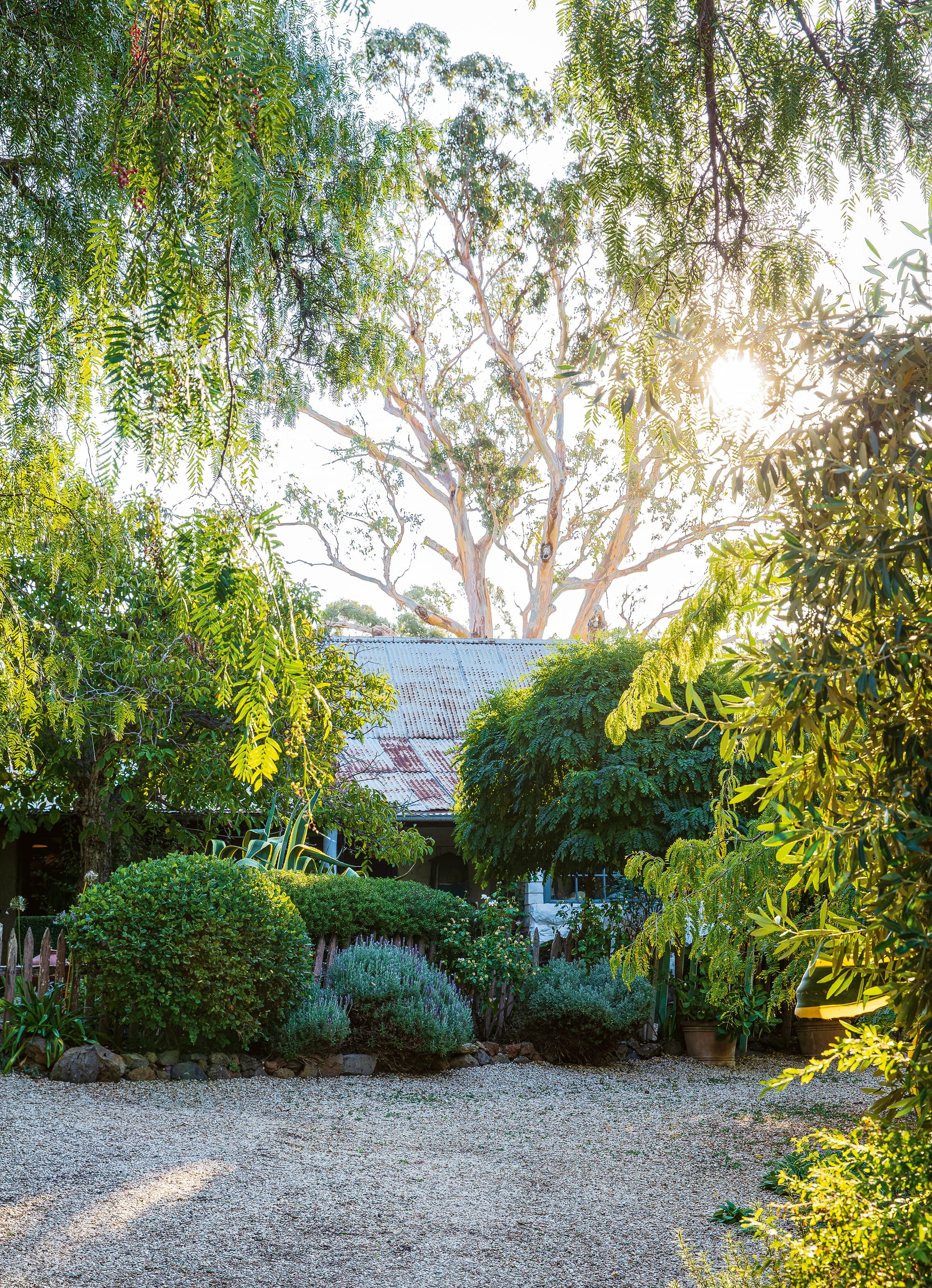
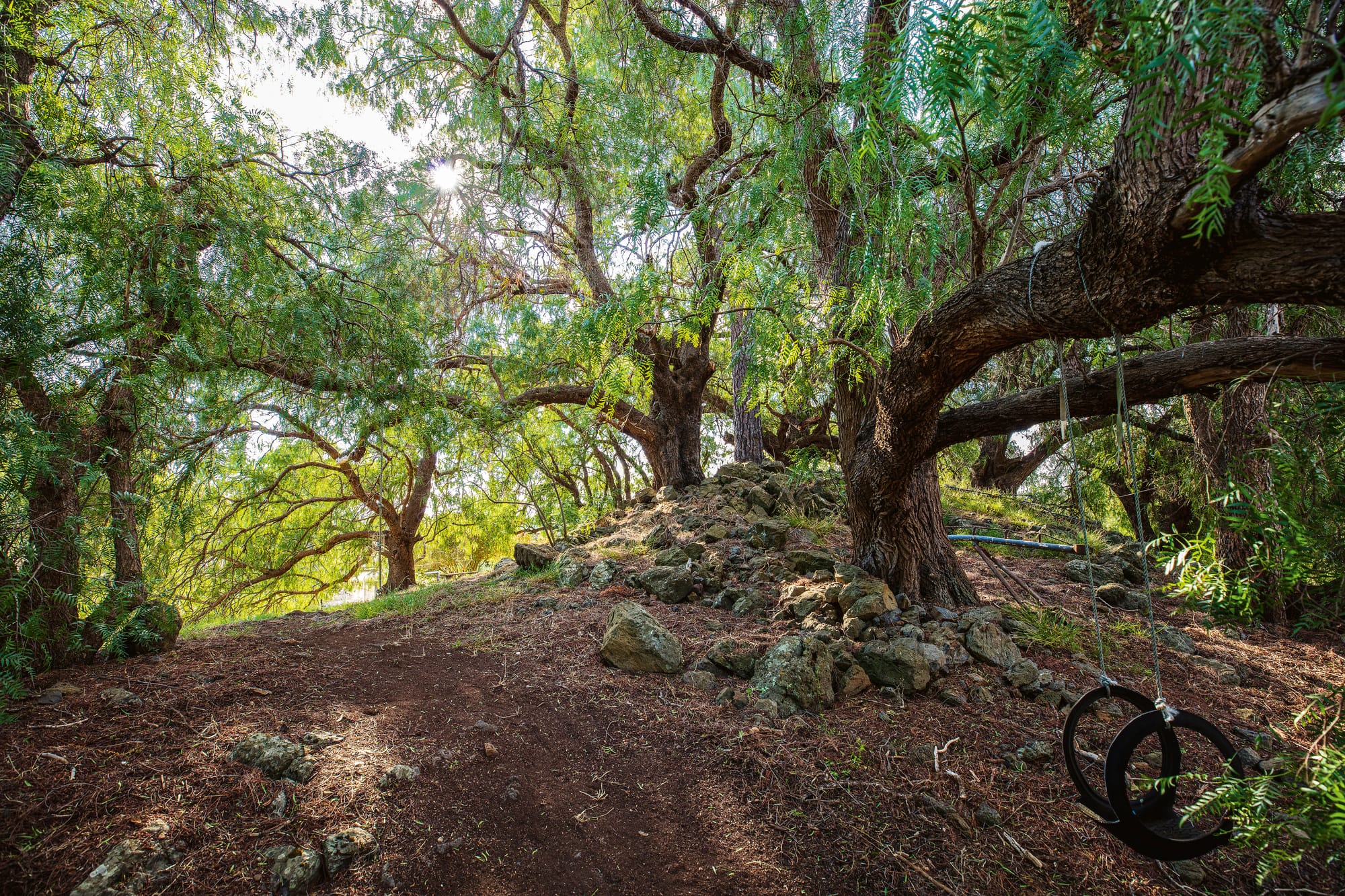
Over the years, making their own compost and mulch has improved the soil, while the trees they’ve planted are meshing. A fast-growing Paulownia tomentosa (empress tree) planted outside the milking shed just eight years ago now provides ample shade.
‘It’s a very harsh climate but the garden looks after itself a lot better now because we’ve created shade,’ says Grant. ‘You can’t have an English garden here. You need to work with the environment and what the weather is doing.’
Jeremy continues, ‘If you get things going—which is always the hard part—it creates its own environment. We’ve created an oasis that’s self-supporting.’
While they’ve transformed so much of the property, one area that’s hardly changed is an atmospheric woodland of peppercorn trees and a lone sentinel pine likely planted during World War I. Jeremy and Grant show great reverence for this mysterious, otherworldly spot that bewitched them from day one.
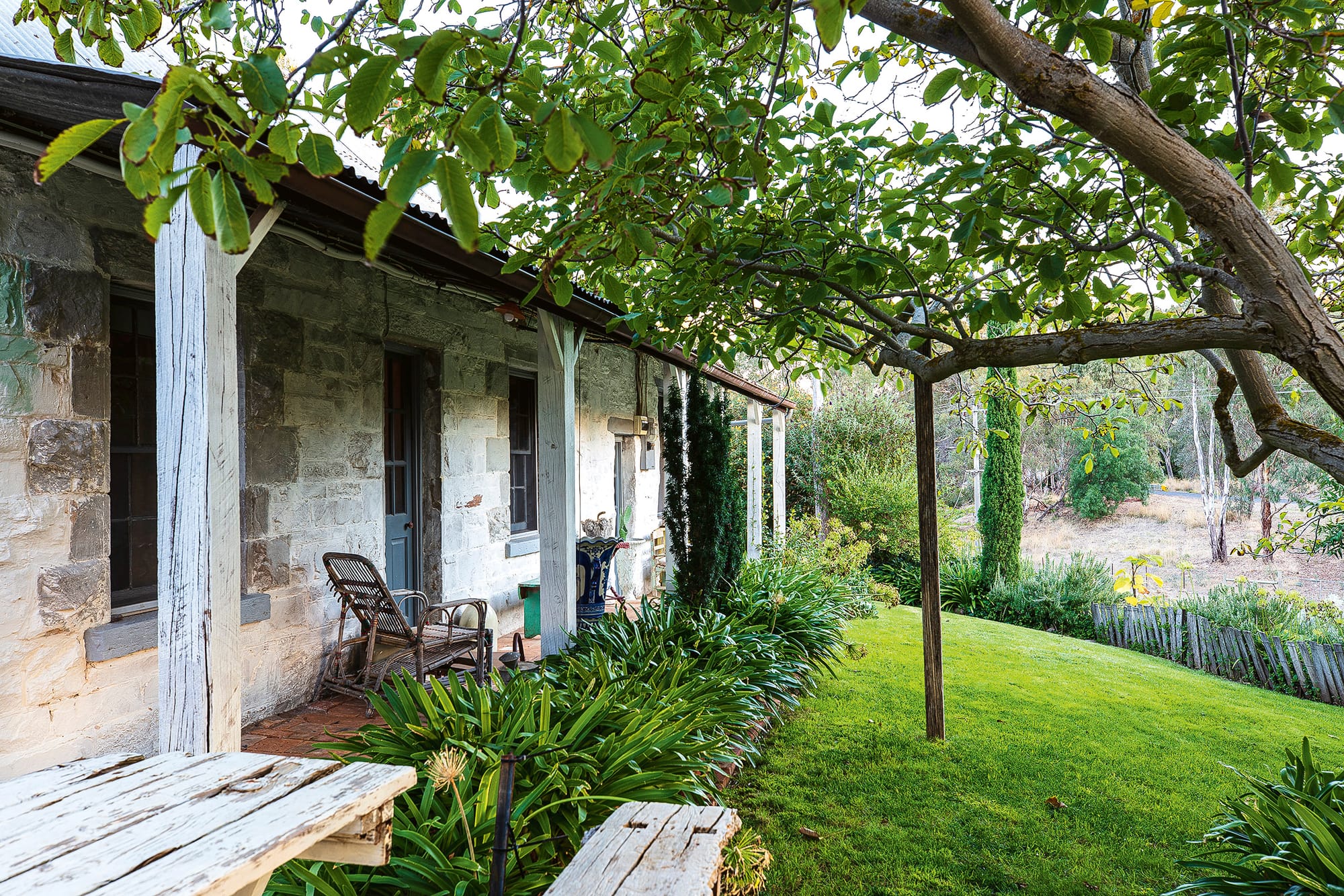
The milking shed also holds a special place in their hearts. While they’ve repaired and decorated what was once a rundown, open shed, they’ve retained its essence. Adorned with graffiti written in the 1940s, the corrugated iron walls offer a nostalgic trip down memory lane. You can almost hear Vera Lynn singing on the wireless.
With the garden’s new incarnation, it makes sense that Jeremy and Grant found Stoneleigh, the property’s previous name, a little uptight. ‘We spent a long time thinking before coming up with The Stones,’ says Jeremy. ‘It just seemed right.’
‘It’s a little bit rock’n’roll too,’ adds Grant.
Dividing their time between Clydesdale and the flat above their Chapel Street shop—which Grant cheekily calls ‘glamping’—it’s clear the couple are hopelessly devoted to this offbeat garden they’ve willed into existence. Their affection for it is deepest during autumn and winter, seasons of gentle profundity in central Victoria.
‘Before nightfall, a tumbling of cold air and mist comes down the valley: it’s very atmospheric. But there’s amazing beauty in every season. Even when it’s hot and dry and your plants are curling up their toes, by six in the evening it all looks amazing,’ says Jeremy. ‘This place gets under your skin. There’s a lot of romance here.’
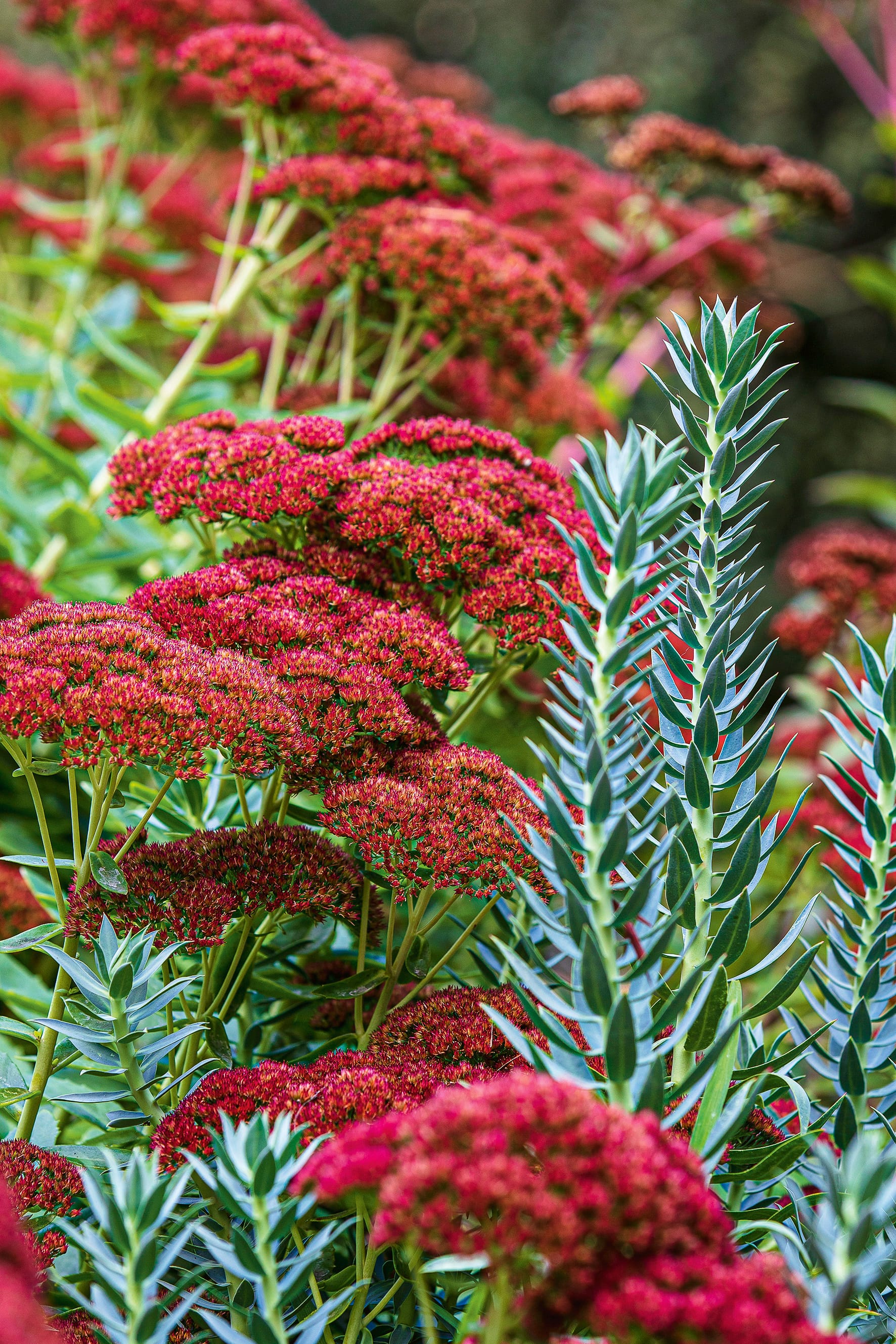
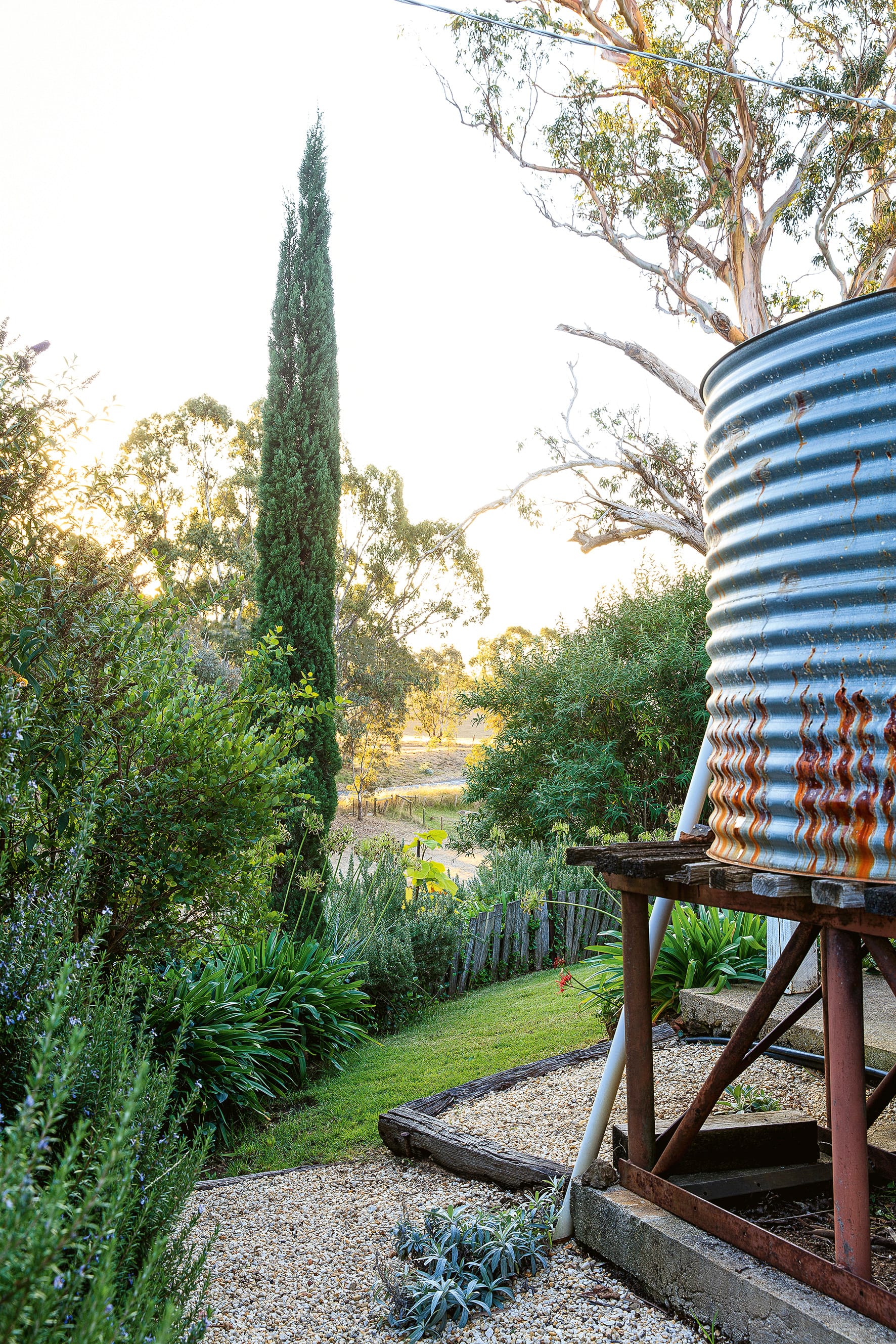
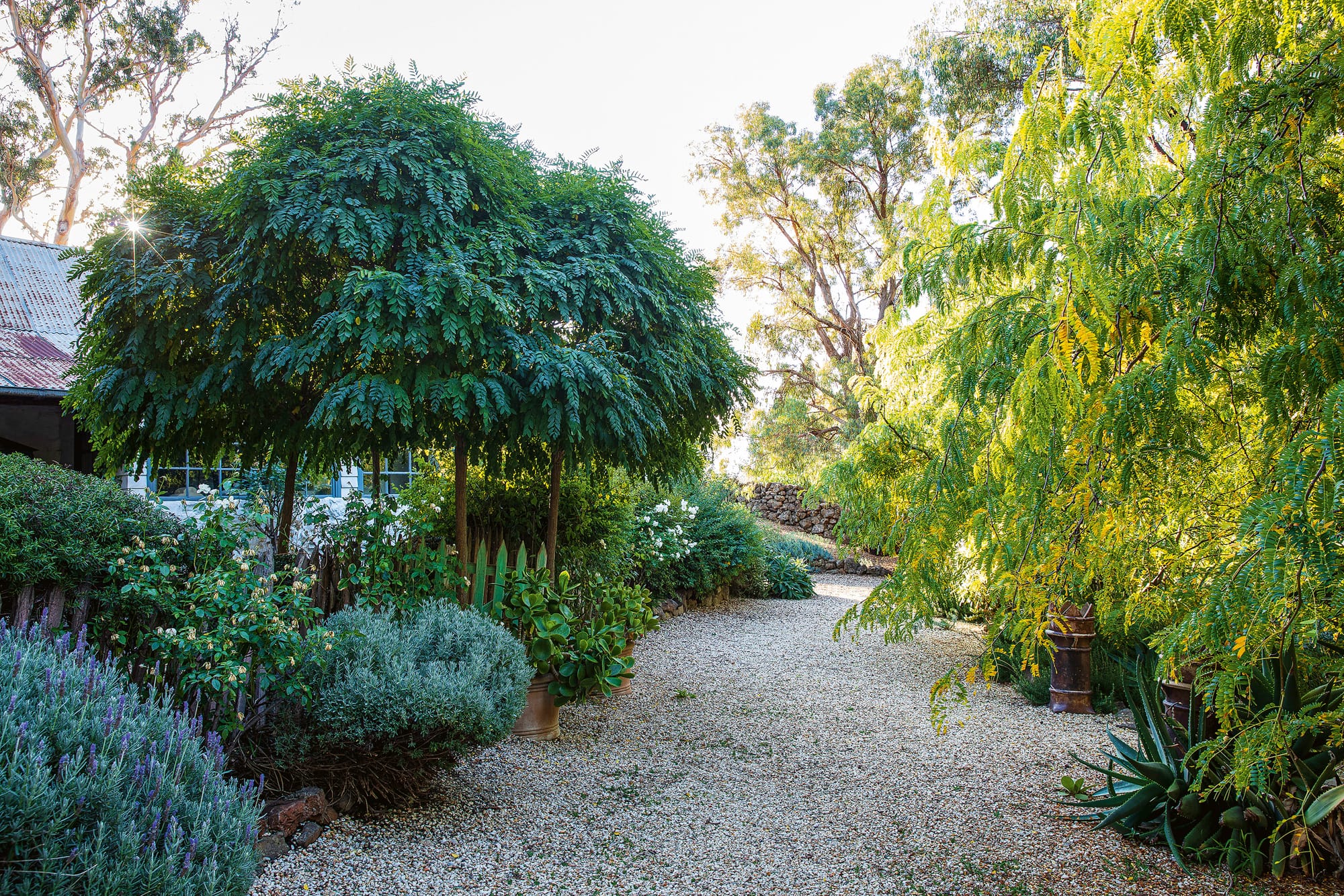
From top/left Sedum ‘Autumn Joy’; a pencil pine; lavender, roses and echiums line the path. Photography Claire Takacs.